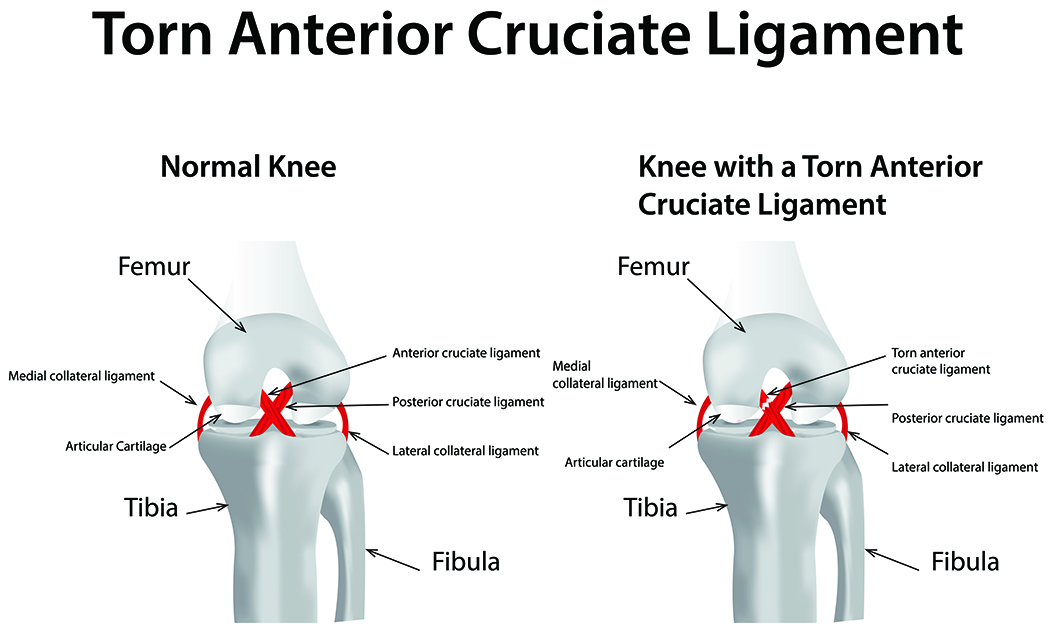The most common knee injuries are to soft tissues, like the ACL, MCL, and PCL—all ligaments that hold together and stabilize the joint. Among these, anterior cruciate ligament (ACL) sprains and tears are the most common.
ACL damage is common in certain sports, especially those that require a lot of pivoting, jumping, and changing direction quickly. While orthopedic and sports medicine specialists opt for the most conservative treatment options available first, many ACL injuries require surgery for complete recovery.
About Knee ACL Injuries
The ACL is a ligament that connects the tibia in the shin to the patella (kneecap). It runs through the middle of the knee joint and crosses diagonally with the PCL (posterior cruciate ligament). The ACL stabilizes the joint during turning and twisting movements, and it prevents the tibia from sliding forward.
Sudden changes in direction, bad jump landings, and forceful contact can stretch or sprain the ACL. Many injuries to the ACL include tears, often complete tears, which result in total loss of stability in the joint. ACL tears are very painful and debilitating, especially for active people.
When Do You Need Surgery for an ACL Knee Injury?
While specialists generally use nonsurgical treatments before resorting to surgery, an ACL tear rarely heals sufficiently without surgical repair. You might be eligible for more conservative treatment if your tear is partial, you do not have signs of major knee instability, or your lifestyle is largely sedentary.
If you have a complete tear, a lot of instability in the joint, and are active, you are likely to need surgery. Being active means not just playing sports but also doing work that requires walking, standing, turning, and twisting. Active people who do not undergo surgery are at high risk for developing additional knee damage and injuries.
Preparing for ACL Knee Surgery
Your orthopedic knee specialist will evaluate and image your injury. They can then advise you about treatment options and whether or not surgery is the right choice. If together, you choose surgery, they will explain everything you need to do to prepare.
The surgeon might recommend a few sessions of physical therapy for preparation. The goal is to reduce swelling and stiffness, and to get a better range of motion in the joint prior to the procedure. This can improve post-surgical recovery.
The Procedure
Fixing an ACL ligament tear is more complicated than simply stitching it back together. Repairing it this way is not effective compared to reconstruction, which involves grafting additional tissue to the torn ligament.
Make sure you follow all of your surgeon’s instructions related to what you can and cannot do before the surgery. You might need to stop taking certain medications, for instance. It is also a good idea to prepare your home for recovery. Sleep on the first floor if you can and set up an area for sitting and resting. Have someone ready to help take you home after surgery and stay with you for a day or two at least.





